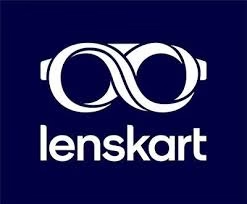As eyewear retailer Lenskart gears up for its ₹7,278 crore initial public offering (IPO), the company enters a pivotal phase that will test whether its blend of convenience, design, and data-driven retail can sustain investor confidence in a public market increasingly focused on profitability.
Founded in 2010 by Peyush Bansal, Amit Chaudhary, Neha Bansal, and Sumeet Kapahi, Lenskart was born out of Bansal’s observation of India’s fragmented and unorganised eyewear sector. Initially operating as an online contact lens retailer under Valyoo Technologies, it quickly expanded to prescription glasses and sunglasses.
Lenskart’s early promise lay in delivering affordable eyewear to consumers’ homes—a unique proposition at the time. However, the founders soon realised that eyewear could not thrive as a purely digital business. By 2013, Lenskart opened its first offline store, adopting a franchise model that has since driven its scale and credibility.
Today, Lenskart operates over 2,600 stores worldwide, including more than 2,000 in India, blending digital efficiency with in-store experiences such as eye tests and trials.
Peyush Bansal’s Journey and Early Experiments
Before Lenskart’s success, Bansal—who studied engineering in Canada and worked at Microsoft in Seattle—had multiple entrepreneurial attempts. His ventures SearchMyCampus (a student classifieds site) and Flyrr (a U.S.-based eyewear platform) provided key learnings that shaped Lenskart’s model.
In the early years, Lenskart also operated WatchKart, BagsKart, and JewelsKart, but Bansal shut them down by 2015 to focus solely on eyewear—a move that became a turning point.
If the IPO performs well, reports suggest Bansal could see his net worth surpass $1 billion, with a potential ₹785 crore gain from partial share sales.
Financial Performance and IPO Details
According to its Red Herring Prospectus, Lenskart posted a ₹61.2 crore profit in Q1 FY26, reversing a loss of ₹10.9 crore a year earlier. Revenue rose 24.6% year-on-year to ₹1,894.5 crore, driven by growth across its online, offline, and international operations.
The IPO, priced between ₹382 and ₹402 per share, will include a ₹2,150 crore fresh issue and a secondary sale by existing investors, including SoftBank, Temasek, KKR, Kedaara Capital, and Premji Invest. Lenskart’s current valuation stands at ₹69,500 crore, with Bansal holding a 10.28% stake worth about ₹6,964 crore.
Technology, Manufacturing, and Integration
Lenskart’s competitive edge lies in its vertically integrated model, managing everything from design and manufacturing to retail. It operates automated facilities in Bhiwadi and Gurugram that produce over three lakh frames per month, with a new Telangana plant under construction.
The company’s AI-driven fitting tools and 3D virtual try-ons enhance customer experience while reducing returns. Tight control over production has also allowed for faster delivery cycles—often within 48 hours.
Brand Evolution and Global Reach
Once known for affordability, Lenskart has repositioned itself as a fashion-forward lifestyle brand, signing celebrities such as Katrina Kaif, Kiara Advani, and Karan Johar.
Internationally, 40–50% of its revenue now comes from markets like Singapore, Japan, Thailand, and the UAE. Strategic acquisitions, including Japan’s Owndays (2022) and Spain’s Meller (2025), have strengthened its global presence and diversified its customer base.
Challenges and Outlook
While Lenskart’s growth is impressive, it faces scrutiny on several fronts—customer service consistency, pricing transparency, and quality control. Online feedback has highlighted issues with product durability and after-sales support, although others cite quick resolutions.
The company’s success also depends on maintaining high sales volumes to offset the capital-intensive nature of its manufacturing and technology investments.
As it expands into smaller Indian cities and Southeast Asian markets, Lenskart’s IPO will serve as a litmus test for whether India’s new-generation consumer-tech companies can thrive under public market discipline.
Disclaimer: The information above is based on publicly available filings and reports. It is not financial advice. Investors should consult certified advisors before making investment decisions.

